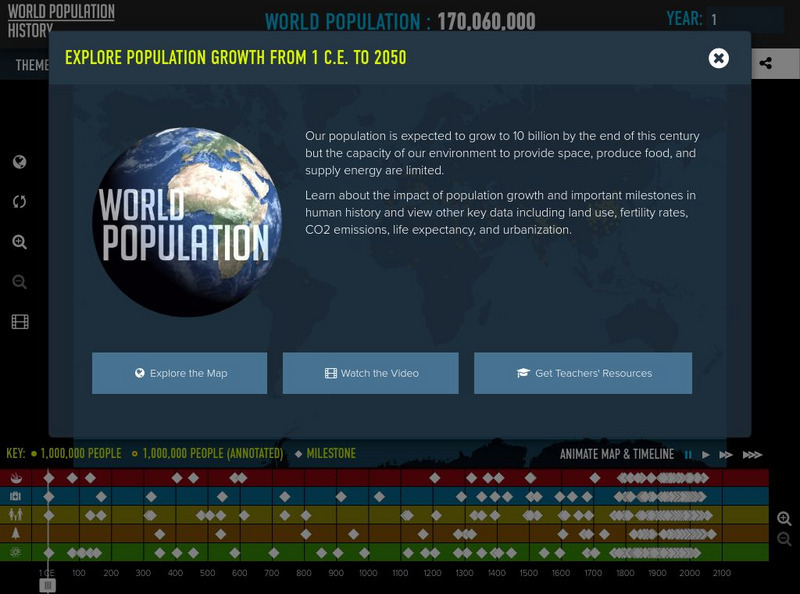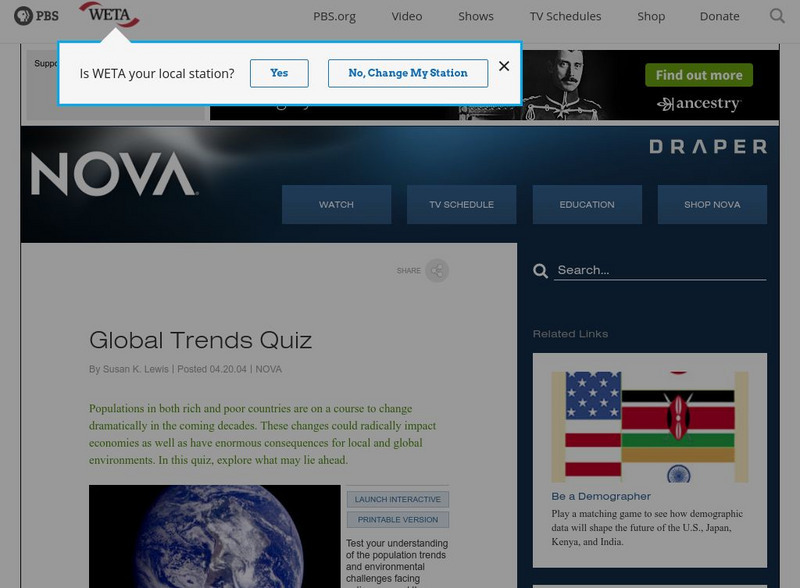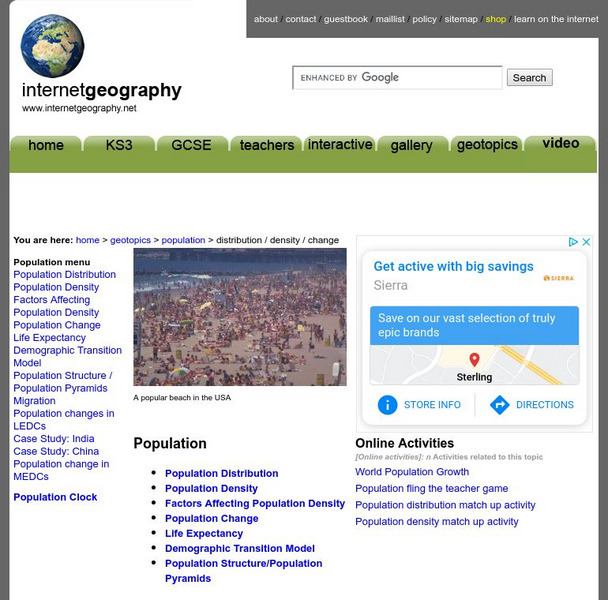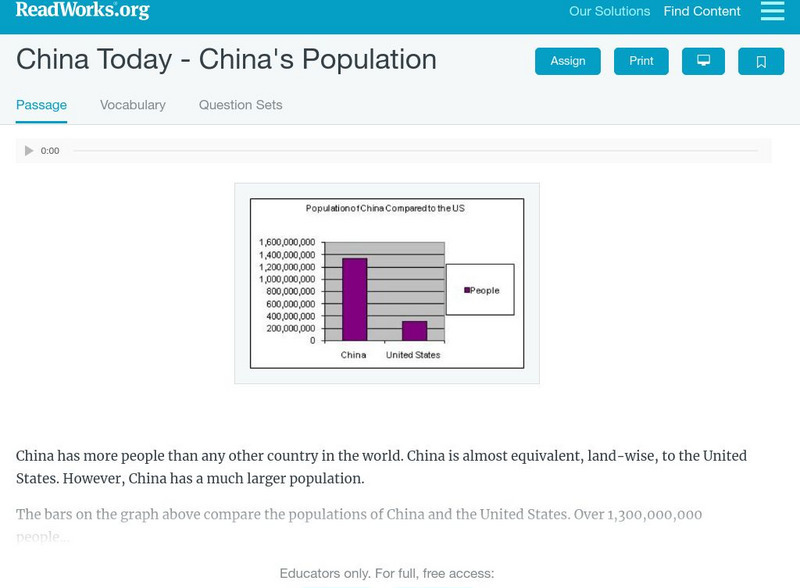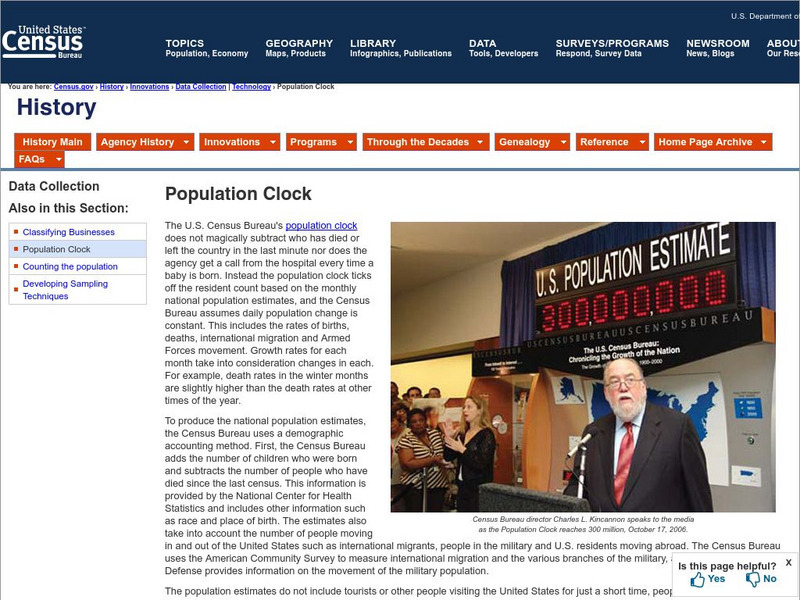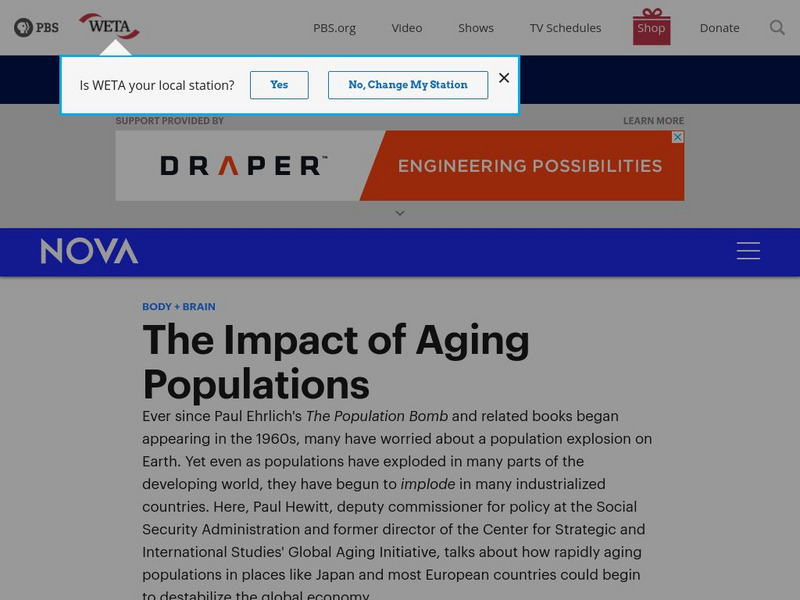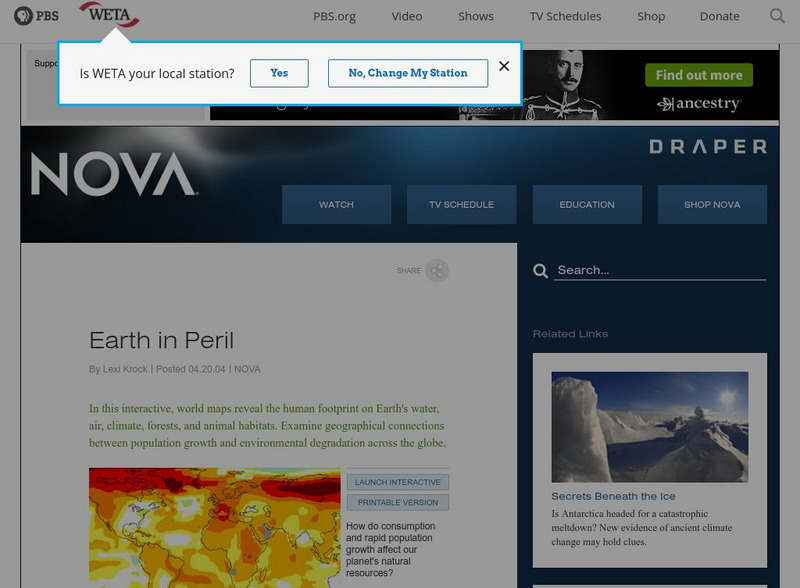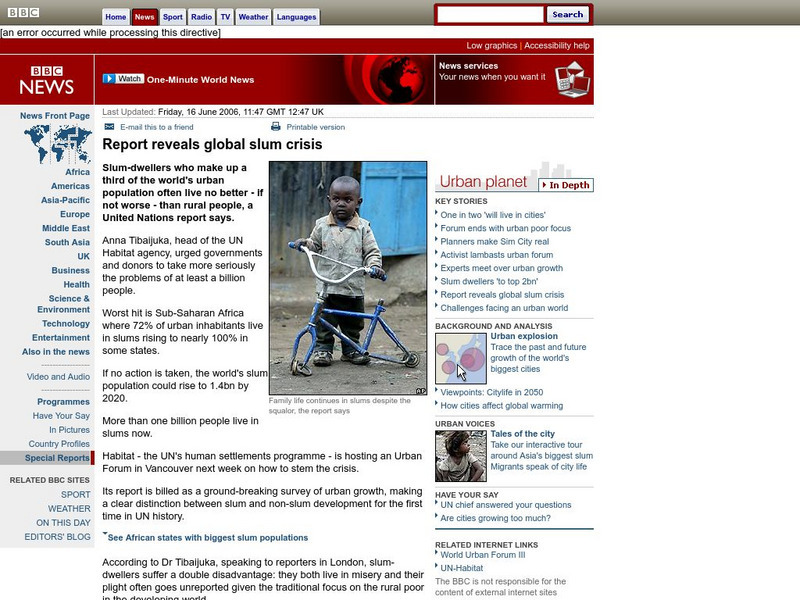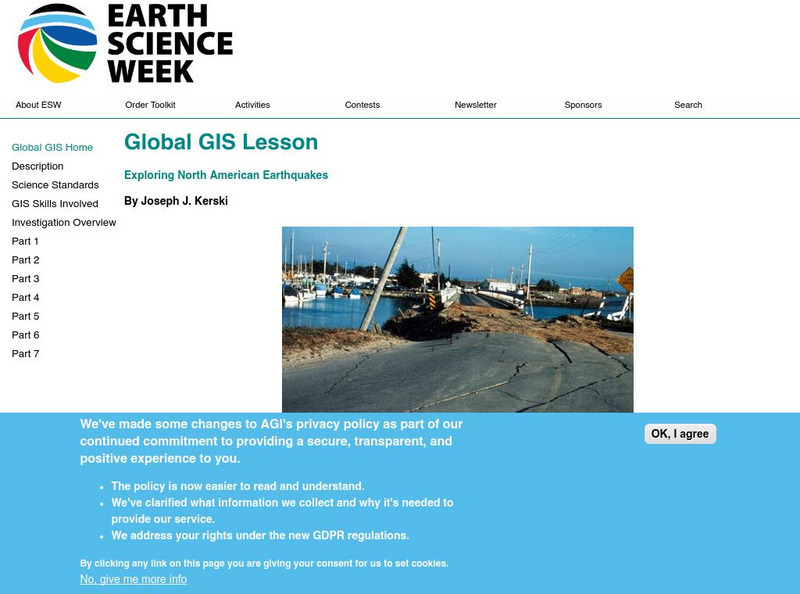Texas Instruments
Texas Instruments: The World Population: Linear and Exponential Models
The population of the world has grown rapidly over the last century. In this activity, several models for the growth of the world's population will be developed. The validity of each in predicting past, current, and future populations...
Population Connection
Population Connection: World Population History
Explore the peopling of our planet from multiple perspectives- historical, environmental, social, and political.
BSCS Science Learning
Bscs: Global Night Sky Comparison
This inquiry invites students to investigate human impacts on the environment. Specifically, students will examine the relationship between human population, light pollution, and how brightly celestial objects like stars appear in the...
PBS
Nova: Global Trends Quiz
How is the human population changing? This quiz covers population trends in the developed world, and the developing world. Explore the impact human population growth is having on the environment.
Population Connection
Population Connection: Population and Environment[pdf]
A paper from the Population Connection that outlines the consequences to the environment if humans continue on the path of overpopulation.
Christian Science Monitor
Christian Science Monitor: Population Decline in Sight
This Christian Science Monitor article notes the projections of a UN Conference of March 2001, predicting that fertility rates worldwide are decreasing, and population decline is in sight.
Population Connection
United Nations Population Fund
This resource attempts to assist developing countries manage their population problems.
Other
Population
Population directly effects our everyday lives in many ways. Explore the effects of population by learning about population density, population distribution, and population change.
Other
Population Education: Homepage
Population Education provides teacher training and a variety of teacher tools to help educators on population concepts such as population growth, overpopulation, our effect on the environment, and related resources.
Other
Population Action International
Organization dedicated to "advancing policies and programs that slow population growth in order to enhance the quality of life for all people." The site includes country by country data on population, natural resources and data...
American Institute of Biological Sciences
Action Bioscience: Population and the Environment: Global Challenge
Look globally at the rising population and understand the impact on the environment, water supply, forestry, and biodiversity through the article and its supporting resources.
Other
Population Reference Bureau: The World at 7 Billion
This interactive map offers statistical data on population, birth and deaths, life expectancy, HIV/AIDS, family planning, and poverty across the world in 2011. The information is also available as a table for all topics. A fascinating...
Illustrative Mathematics
Illustrative Mathematics: F Le in the Billions and Exponential Modeling
For this task, young scholars examine world population data from 1804 to 2012 and investigate whether an exponential function is appropriate for modeling the relationship between the world population and the year. Aligns with F-LE.A.1.c.
Read Works
Read Works: China Today: China's Population
[Free Registration/Login Required] An informational text about the population grown in China. A question sheet is available to help students build skills in reading comprehension.
US Census Bureau
U.s. Census Bureau: Population Clocks
This U.S. Census Bureau Web site has two population clocks with notes available. One clock shows the population increase for the United States. The other shows the world population increase.
PBS
Pbs Learning Media: Global Trends Quiz
In this interactive quiz from NOVA, take the Environmental Challenge and test your knowledge of human impact on the world's natural resources and climate.
University of Michigan
University of Michigan: Urbanization and Global Change
A thorough site that examines urban population in developed and developing countries, answers the question whey is the urban population increasing so fast, and delves into the problems associated with rapid urban growth.
Annenberg Foundation
Annenberg Learner: Math in Daily Life: Population Growth
At this website there is basic information about world population growth over the last 300+ years. The link at the end of the article is to another article that compares the population growth of two states.
PBS
Pbs: Nova: The Impact of Aging Populations
An interview with Paul Hewitt, an expert in aging and public policy. The discussion focuses on the impact that aging populations around the world will have on economies, social structures, and government policies.
Illustrative Mathematics
Illustrative Mathematics: F Le in the Billions and Linear Modeling
In this task, students are shown a table of world population data and asked to explore whether linear functions would be appropriate to model relationships within the data. Aligns with F-LE.A.1.b.
PBS
Nova: Earth in Peril
A series of nine maps with accompanying explanations. They show how population growth has affected the environment around the world in terms of water availability, climate change, land and forest use, and more. There are both interactive...
A&E Television
History.com: How the Columbian Exchange Brought Globalization and Disease
Christopher Columbus' arrival in the Caribbean in 1492 kicked off a massive global interchange of people, animals, plants and diseases between Europe and the Americas.
BBC
Bbc: Report Reveals Global Slum Crisis
Outlines the problems of the urban populations in Subsaharan African countries. Examines why the people move into these communities and why they get stuck there. (16 June 2006)
American Geosciences Institute
American Geosciences Institute: Earth Science Week: Global Gis Lesson: Exploring North American Earthquakes
In this series of lessons, learners use Geographic Information Systems (GIS) together with the tools and data from the North America Global GIS CD to investigate earthquakes, volcanoes, and population from a local to global scale....



